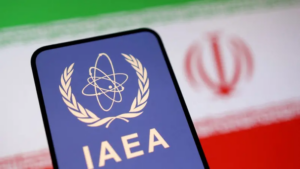
Internet services in multiple countries in the Middle East and South Asia have been disrupted since Saturday by yet another series of subsea cable breaks along the Red Sea route, which was plagued by similar incidents last year.
According to posts on Bluesky and Mastodon by network monitoring firm Netblocks on Sunday, subsea cable failures affecting the SEA-ME-WE-4 and IMEWE (India-Middle East-Western Europe) cable systems near Jeddah, Saudi Arabia, had degraded internet connectivity in multiple countries including Pakistan and India.
Netblocks also reported that du and e& UAE were also impacted, resulting in slow internet speeds and intermittent access.
Cloudflare Radar also confirmed the outages on X (formerly Twitter), posting on Saturday that it was also seeing internet disruptions for the UAE and Pakistan.
Cloudflare also said that latency between Delhi and London grew 20% starting at 23:00 UTC on September 5, while latency between Mumbai and Frankfurt grew 30%. Average latency on those routes remained high as of Sunday.
According to an Associated Press report on Monday, Kuwait’s government said it is experiencing internet disruptions attributed to a cut on the FALCON GCX cable running through the Red Sea.
The SEA-ME-WE-4, IMEWE and FALCON GCX cables all have a landing point in Jeddah.
Microsoft Azure said in a post updated Sunday night that network traffic traversing through the Middle East “may experience increased latency due to undersea fibre cuts in the Red Sea.”
Azure said that while it has rerouted traffic through alternate pathways, it still expects “higher latency on some traffic that previously traversed through the Middle East.”
No cause for the subsea cable failures has been determined as we went to post.
This is not the first time countries have been impacted by simultaneous subsea cable failures along the Red Sea route. In February last year, the Seacom, EIG and AAE-1 cable systems were severed in the Red Sea by an anchor drag. Several other cable failures were also reported along the coasts of east and west Africa last year.
The apparent rise in subsea cable outages – to include several politically charged incidents in the Baltic sea – spurred the International Telecommunication Union (ITU), the United Nations Agency for Digital Technologies, and the International Cable Protection Committee (ICPC) to form the International Advisory Body for Submarine Cable Resilience in December 2024 to explore ways to improve cable resilience.
In February this year, the advisory body issued a declaration promoting global cooperation on “strengthening cable protection through risk mitigation, promoting diverse routes and landings to enhance resilience and continuity, and facilitating timely deployment and repair.” The body also formed working groups focused on risk identification, monitoring and mitigation.






